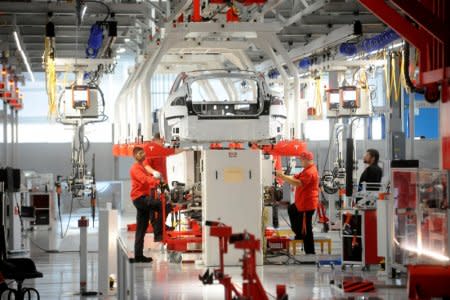U.S. second-quarter productivity strongest in three years

Thomson Reuters
WASHINGTON (Reuters) - U.S. worker productivity increased at its fastest pace in more than three years in the second quarter, depressing labor costs, but the trend in productivity growth remained moderate.
The Labor Department said on Wednesday nonfarm productivity, which measures hourly output per worker, rose at a 2.9 percent annualized rate in the April-June quarter. That was the strongest rate since the first quarter of 2015.
Data for the first quarter was revised lower to show productivity increasing at a 0.3 percent pace instead of the previously reported 0.4 percent rate. Economists polled by Reuters had forecast productivity growing at a 2.3 percent rate in the second quarter. Compared to the second quarter of 2017, productivity increased at a rate of 1.3 percent.
The government also revised data going back to 1947, which did not materially change the picture of lackluster productivity growth, though unit labor costs were stronger than previously estimated in 2017 because of upward revisions to hourly compensation.
The annual rate of productivity growth from 2007 to 2017 was revised up 0.1 percentage point to a rate of 1.3 percent.
The pickup in productivity in the second quarter was flagged by a surge in economic growth during that period.
Gross domestic product increased at a 4.1 percent rate in the April-June quarter, the strongest performance in nearly four years. The economy grew at a 2.2 percent pace in the first quarter. The sluggish trend in productivity, however, suggests that the second-quarter GDP growth pace is unsustainable.
Unit labor costs, the price of labor per single unit of output, fell at a 0.9 percent pace in the second quarter. That was the weakest pace since the third quarter of 2014. First-quarter growth in unit labor costs was revised up to a 3.4 percent rate from the previously reported 2.9 percent pace.
Labor costs increased at a 1.9 percent rate compared to the second quarter of 2017, pointing to moderate wage inflation.
(Reporting by Lucia Mutikani Editing by Paul Simao)
See Also:

 Yahoo News
Yahoo News 
